When most people think of chickens, they picture the standard egg-laying chicken found on many farms across the United States. However, there are dozens of breeds of chickens, each with a unique history, appearance (chicken pictures), and purpose.
Some of these breeds are classified as “heritage” chicken breeds by the American Poultry Association (APA). Heritage chicken breeds were popular but have since fallen out of favor with commercial chicken keepers.
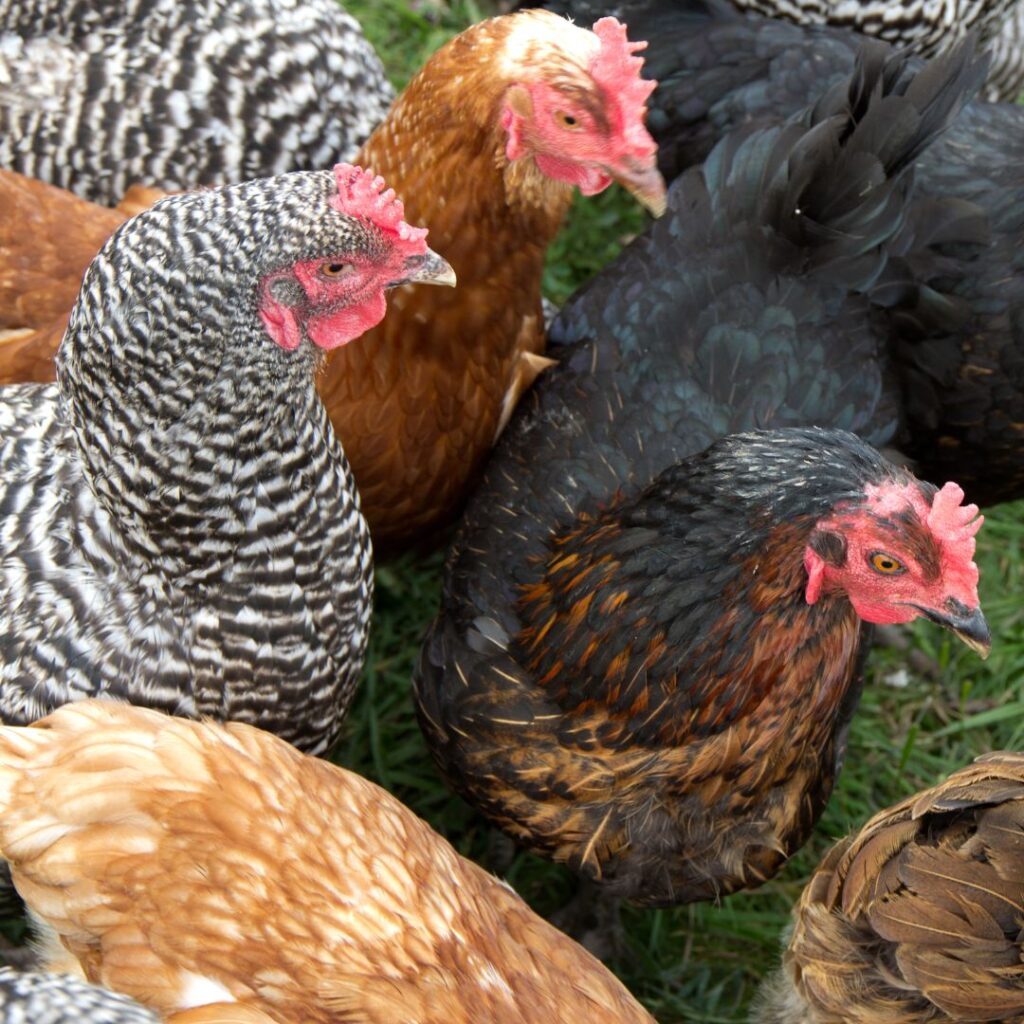
What is a “Heritage Breed”?
Heritage chicken breeds are those that were popular before the 1950s. These birds were selected for their ability to forage for food, withstand harsh weather conditions, and produce eggs or meat.
Unfortunately, as industrial agriculture began to take over in the mid-20th century, many of these breeds fell out of favor. There has been an increase in hybrid chickens in the commercial markets. However, there has been a resurgence in interest in heritage chicken breeds recently.
Definition Of A Heritage Chicken Breed
If you are raising chickens and looking to add heritage breeds to your flock, a lot goes into a responsible breeder. It’s great to have a better understanding of the guidelines they follow to provide you with a healthy heritage chick.
To qualify as a Heritage Chicken, the bird must comply with all of the following criteria:
APA
- Must be an American Poultry Association (APA) Standard Breed
- Must be from parent and grandparent stock of breeds recognized by the APA before the mid-20th century
- Genetic lines can be traced back multiple generations.
- Traits that meet the APA Standard of Perfection guidelines for the breed. Produced by a heritage hen and the heritage egg sired by an APA Standard breed.
- APA standard breeding hens must lay heritage eggs.
Natural breeding
- A Heritage Chicken must be bred and genetically maintained through a natural mating act.
- All chickens recognized and labeled as Heritage must be derived from original parents and grandparents, bred naturally.
Long, productive outdoor lifespan
- Heritage chickens must be genetically capable of leading a long, vigorous life and prosper in outdoor environments like free-range production systems.
- Laying hens can produce eggs for 5-7 years, while roosters should remain productive from maturity until around 3-5 years.
- Read about how long chickens will lay eggs in their lifetime here.
Slow growth rate
- Heritage Chicken must not be rushed to reach their market weight. A slow and moderate growth rate is required, so the bird has enough time to build strong bones, healthy organs, and muscle mass before reaching its final size. This ensures healthier chickens with greater nutritional value for consumers.
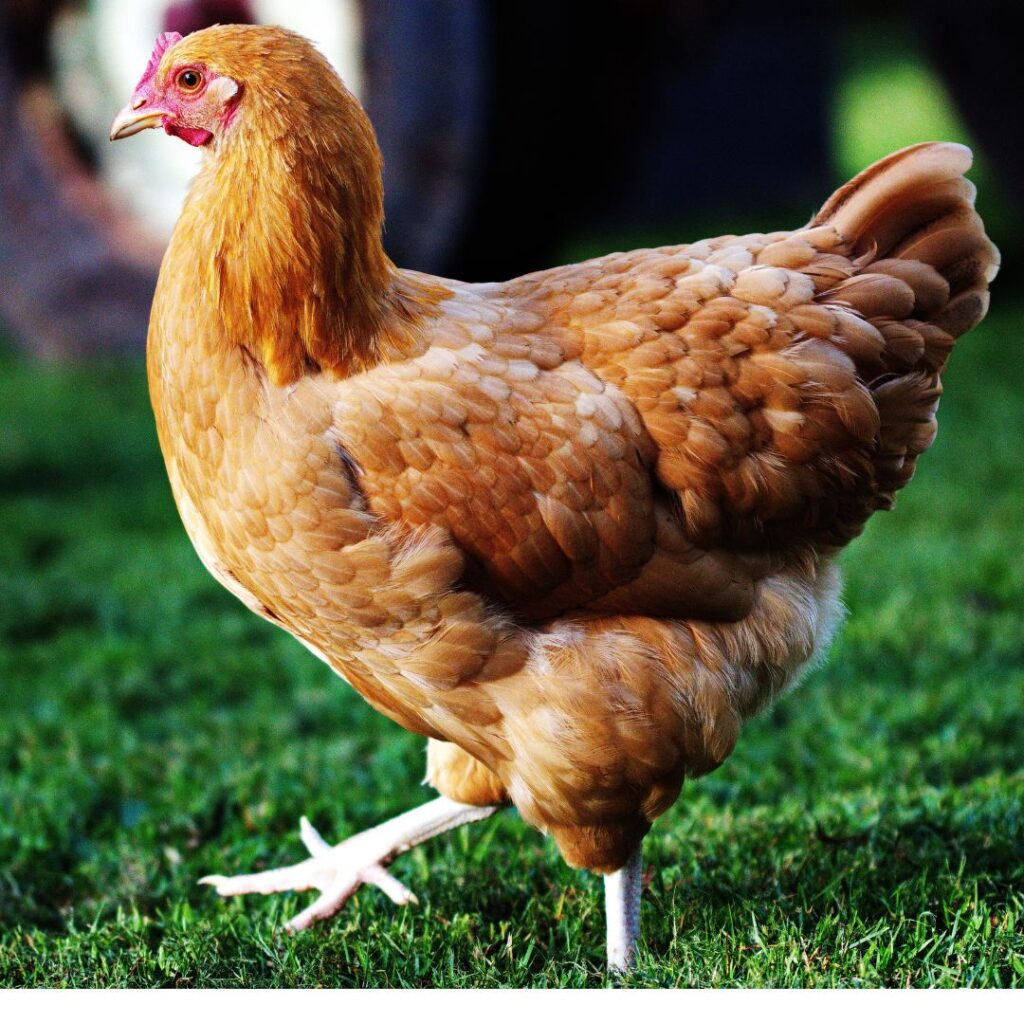
Who Is The Livestock Conservancy?
The Livestock Conservancy (previously known as the American Livestock Breeds Conservancy or ALBC) is a nonprofit organization dedicated to preserving livestock and poultry breeds. They accomplish this goal through conservation, education, and advocacy.
The Conservancy works with farmers and ranchers throughout the United States to help preserve at-risk animals.
They define heritage poultry as “traditional poultry breeds having a long history of being raised by farmers or homesteaders for utility or aesthetic purposes in North America.”
You can find more information about the Livestock Conservancy here.
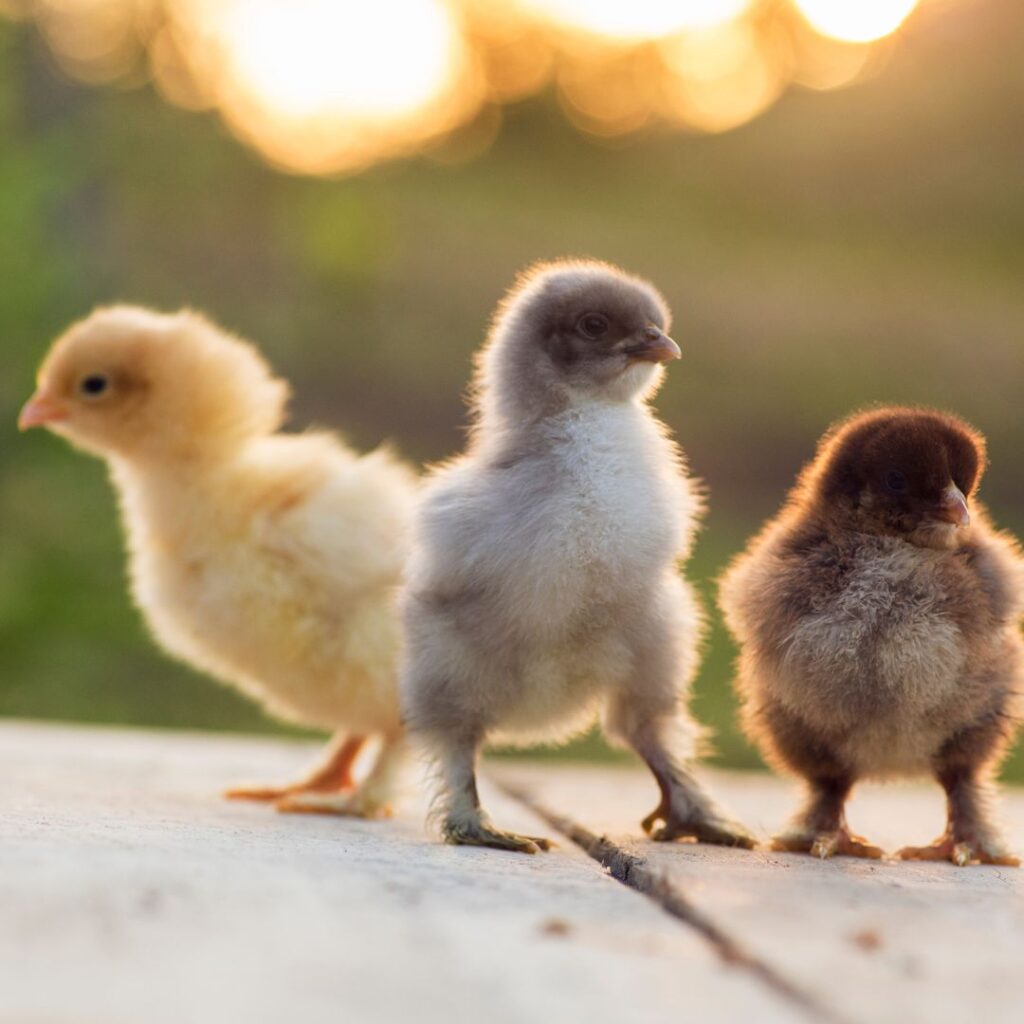
Categories of Risk with the Livestock Conservancy
The Livestock Conservancy (TLC) divides at-risk animals into five categories: critical, threatened, watch, recovering, and study.
Critical
Critical means that fewer than 500 chickens are in the United States and the population worldwide is estimated to be fewer than 1000.
11 breeds on the critical list
Campine, Crèvecoeur, Holland, La Flèche, Malay, Modern Game, Nankin, Redcap, Spanish, Sultan, and Yokohama
Threatened
Threatened means less than 1,000 breeding chickens are left in the United States, and the population worldwide is estimated to be fewer than 5000.
11 chicken breeds on the threatened list
Aseel, Cubalaya, Faverolles, Houdan, Icelandic, Lakenvelder, Old English Game, Rhode Island White, Russian Orloff, Sebright, Spitzhauben
Watch
Watch means less than 5000 breeding hens are left in the United States, and the population worldwide is estimated to be fewer than 10,000.
21 breeds of chickens on the watch list
Ancona, Andalusian, Buckeye, Buttercup, Catalana, Chantecler, Cornish, Delaware, Dominique, Dorking, Hamburg, Java, Jersey Giant, Langshan, Minorca, New Hampshire, Phoenix, Polish, Rhode Island Red (non-industrial), Shamo, Sumatra
Recovering
Recovering means that though these animals were once at risk, their numbers have increased enough that they are no longer considered endangered.
Breeds once listed in another category, but have exceeded Watch category numbers and still need monitoring.
6 breeds of chickens on the recovering list
Australorp,Brahma, Cochin, Leghorn– Non-industrial, Plymouth Rock (Barred Rocks), Sussex
Study
A chicken on the study list is defined by a chicken breed that requires more research and investigation to understand the chicken’s history, population status worldwide and in the U.S. as well as the chicken’s genetics.
2 breeds of chickens on the Study list
Araucana and the Saipan

Livestock Conservancy Graduates
Thanks to conservationists’ commitment, loyalty, and tireless efforts, breeds of chickens have been saved from extinction and are no longer on the Conservation Priority List as of 2016.
- Orpington chickens
- Wyandotte chickens
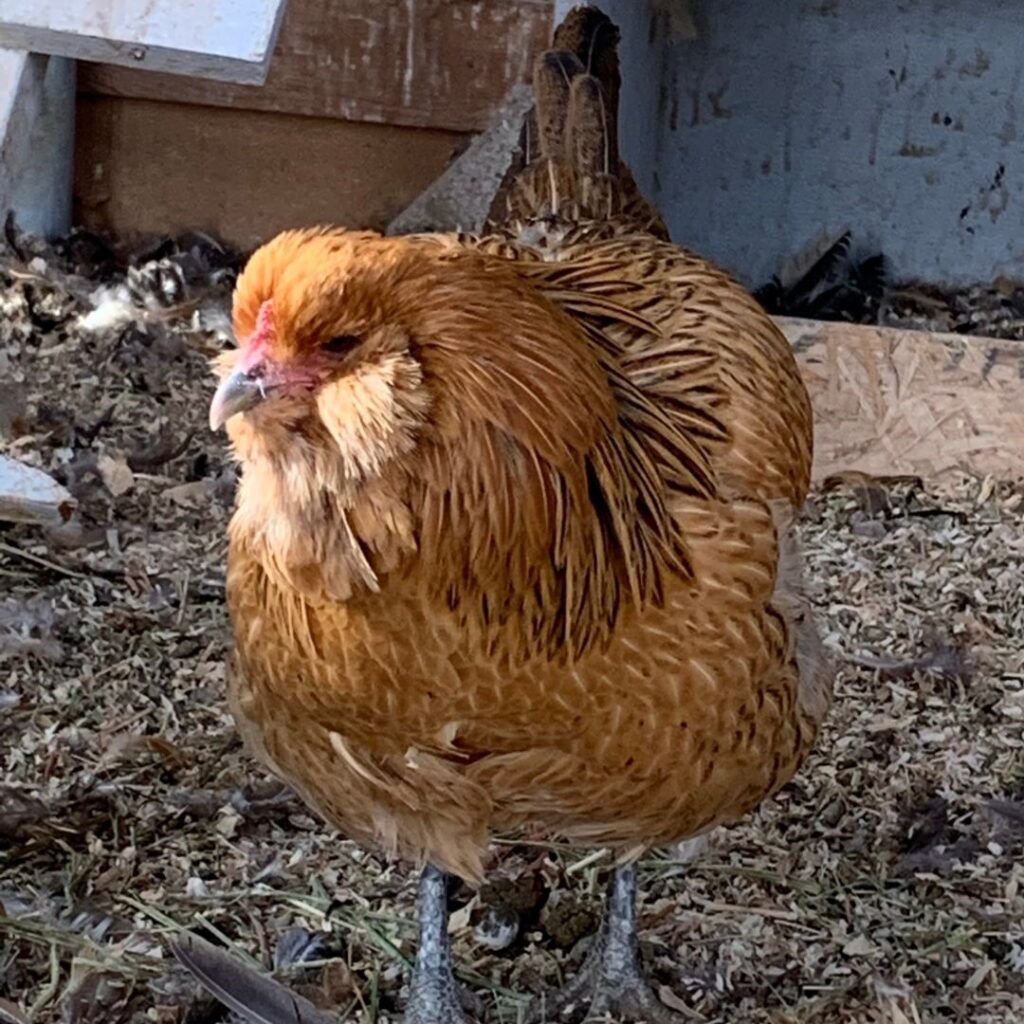
4 Reasons to Raise Heritage Chicken Breeds
You might consider adding a heritage chicken to your flock for many reasons.
Heritage chicken breeds tend to be hardier and more disease-resistant than commercial chicken breeds.
These birds are hardy and can withstand harsher conditions than many commercial breeds available today.
This means that they require less care and attention from you as the farmer or homesteader.
Unique appearances and personalities make them fun to raise. Heritage chicken breeds often have unique coloring and patterns that make them visually stunning.
For example, Ameraucanas have muffs and beards (feathers that cover their ears), while Araucanas have tufts of feathers on their heads that make them look like they’re wearing little hats.
Brahmas are known for being excellent mothers, while Rhode Island chickens are known for being prolific egg layers.
Many believe a heritage chicken has superior flavor to commercial birds, yielding more delicious meat. Raising heritage chickens is a great way to get it if you want a unique culinary experience.
By buying heritage chicken breeds, you are helping to preserve these endangered animals for future generations.

What Is An American Poultry Association (APA) Standard Chicken Breed
The American Poultry Association (APA) is an organization that sets standards for poultry breeding in the United States. Every year, they release a list of what they consider to be standard chicken breeds.
This list is used by breeders all over the country as a reference point when selecting which birds to breed. 4-H clubs and other youth organizations also use the APA’s standards when exhibiting poultry at fairs nationwide.
You can find more information about APA standard chicken breeds here.
9+ Heritage Breeds To Consider For Your Backyard Flock
These are our top picks for Heritage chicken breeds, take a look and see if your flock could benefit from one of these chicken breeds. These are all APA standard-bred chicken breeds that have yet to graduate from the Livestock Conservancy list.
Australorp

Australorps are known for their calm, friendly, docile personalities and still have these wonderfully vibrant personalities.
- Recognized by APA (American Poultry Association) – Yes, 1929
- Livestock Conservancy (TLC) Status: Recovering
- Heat Tolerant: Yes
- Cold Hardy: Yes
- Meat Production: Yes
- Egg Production: Large Brown Eggs, 200 – 280 per year
- Age til Mature: 20 weeks
- Size: Hen 5 1/2 pounds, Rooster 8 pounds
Brahma Chickens
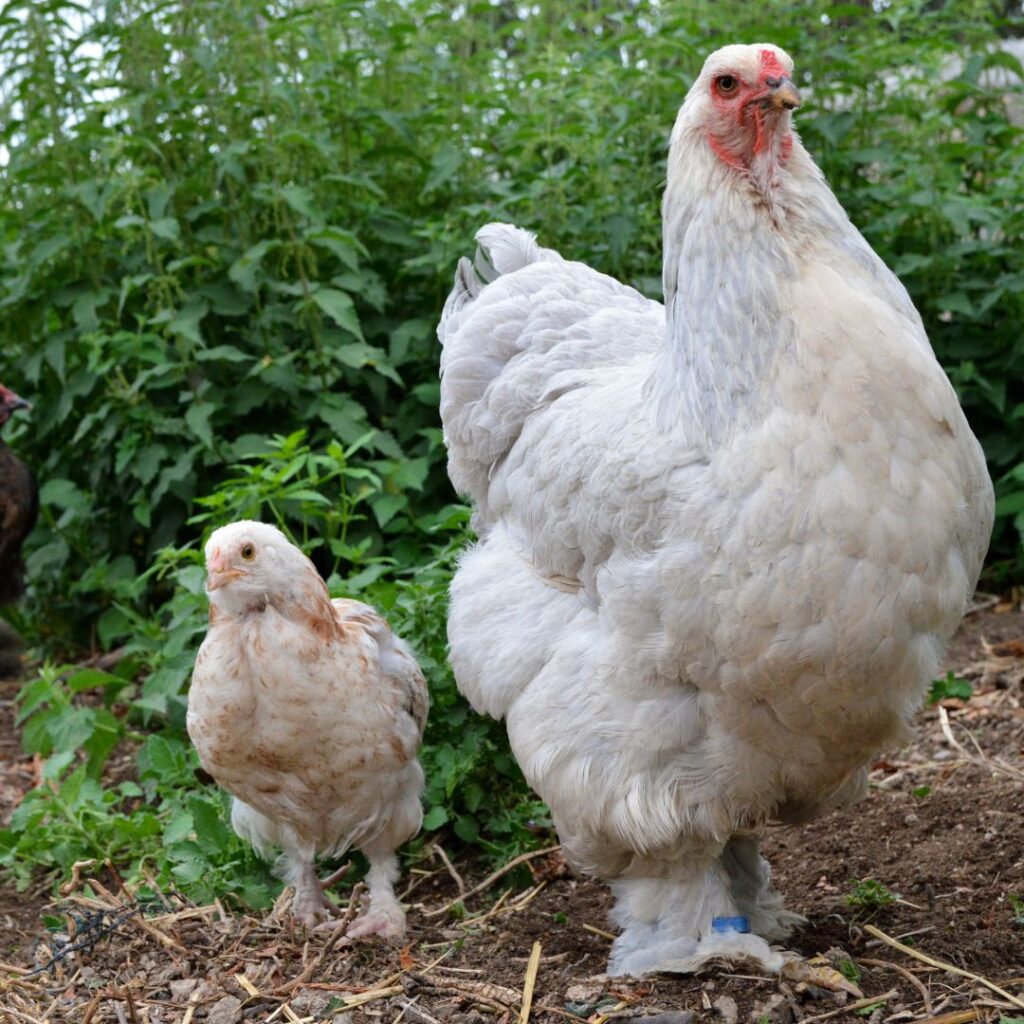
The Brahma hens and the roosters have reputations for being calm, friendly, and social. They make excellent pets. This is one of the top largest chicken breeds in the world too. These make for the friendlies barnyard roosters too.
- Recognized by APA (American Poultry Association) – Yes, 1874
- (TLC) Status: Recovering
- Cold Hardy: Yes
- Heat Tolerant: Yes
- Meat: Yes, excellent meat birds
- Eggs: Large, brown, 180-240 per year
- Age til Mature: 20 weeks
- Size: Hens –9 1/2 lbs, Roosters – 12 lbs
Barred Plymouth Rock, AKA Plymouth Rock Chicken
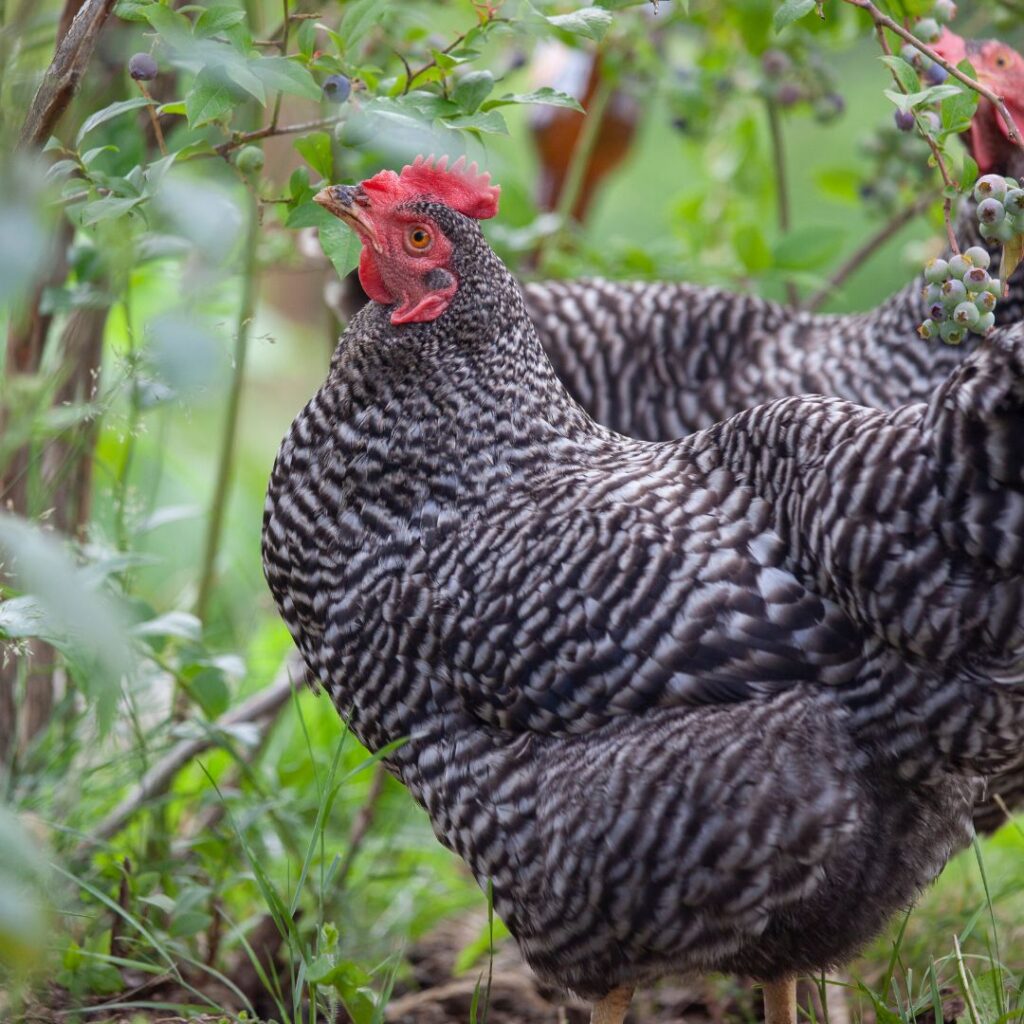
The Plymouth Rocks are Quiet, friendly, playful, and tolerate being handled, another good family pet choice.
- Recognized by APA – Yes – 1874
- (TLC) Status: Recovering
- Cold Hardy: Yes
- Heat Tolerant: Yes
- Meat: Yes
- Eggs: Large, Brown, 200 – 280 per year
- Age til Maturity: 20 weeks
- Size: Hen – 7 1/2 lbs, Rooster – 9 1/2 lbs
Buckeye Chickens
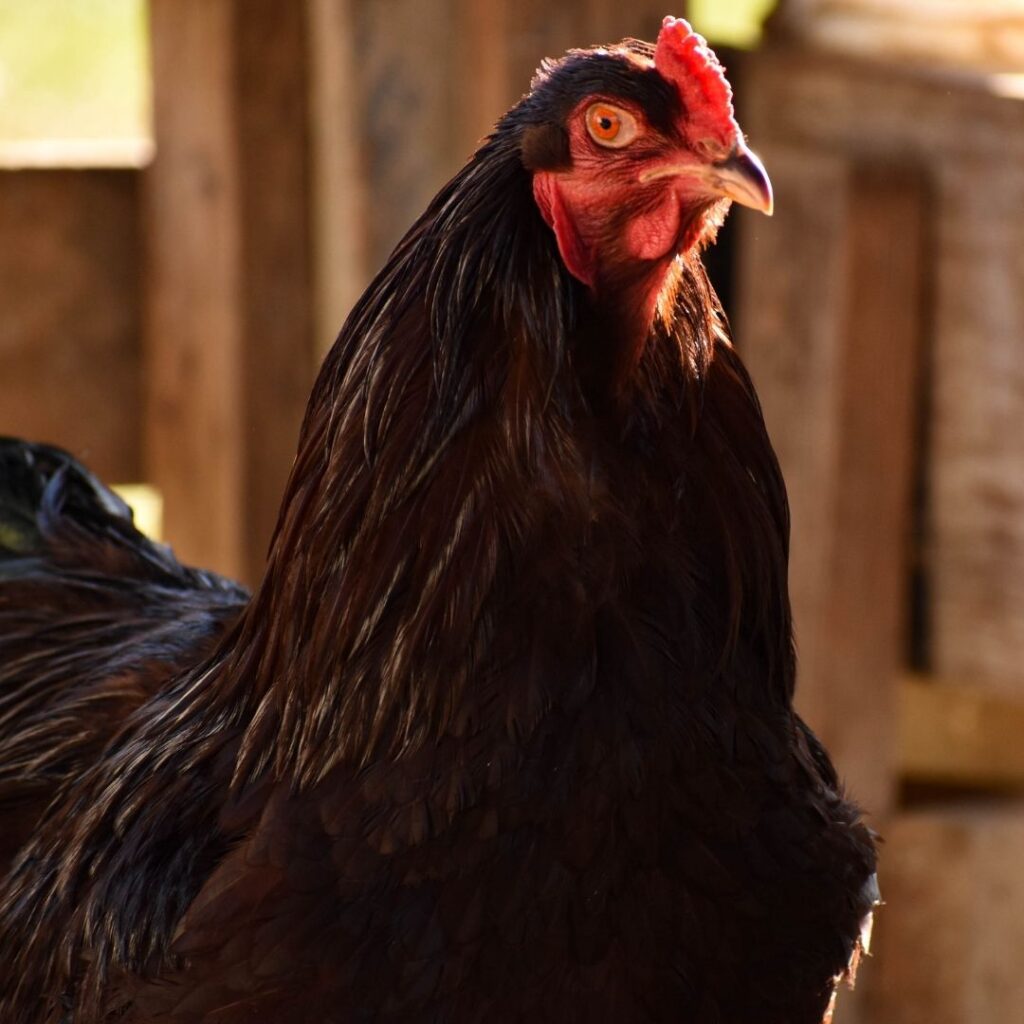
Buckees are docile birds with sweet dispositions and make great family pets. The Buckeyes are curious, active chickens that are great for free-ranging and foraging for food.
- Recognized by APA: Yes, 1904
- (TLC) Status: Threatened
- Cold Hardy: Excellent birds for cold climates
- Heat Tolerant: Yes
- Dual Purpose Bird: Excellent choice for meat and eggs.
- Eggs: Medium, brown, 150 – 200 per year.
- Age til Mature: 20 weeks
- Size: Hens –6 1/2 lbs, Roosters – 9 lbs
Cochin
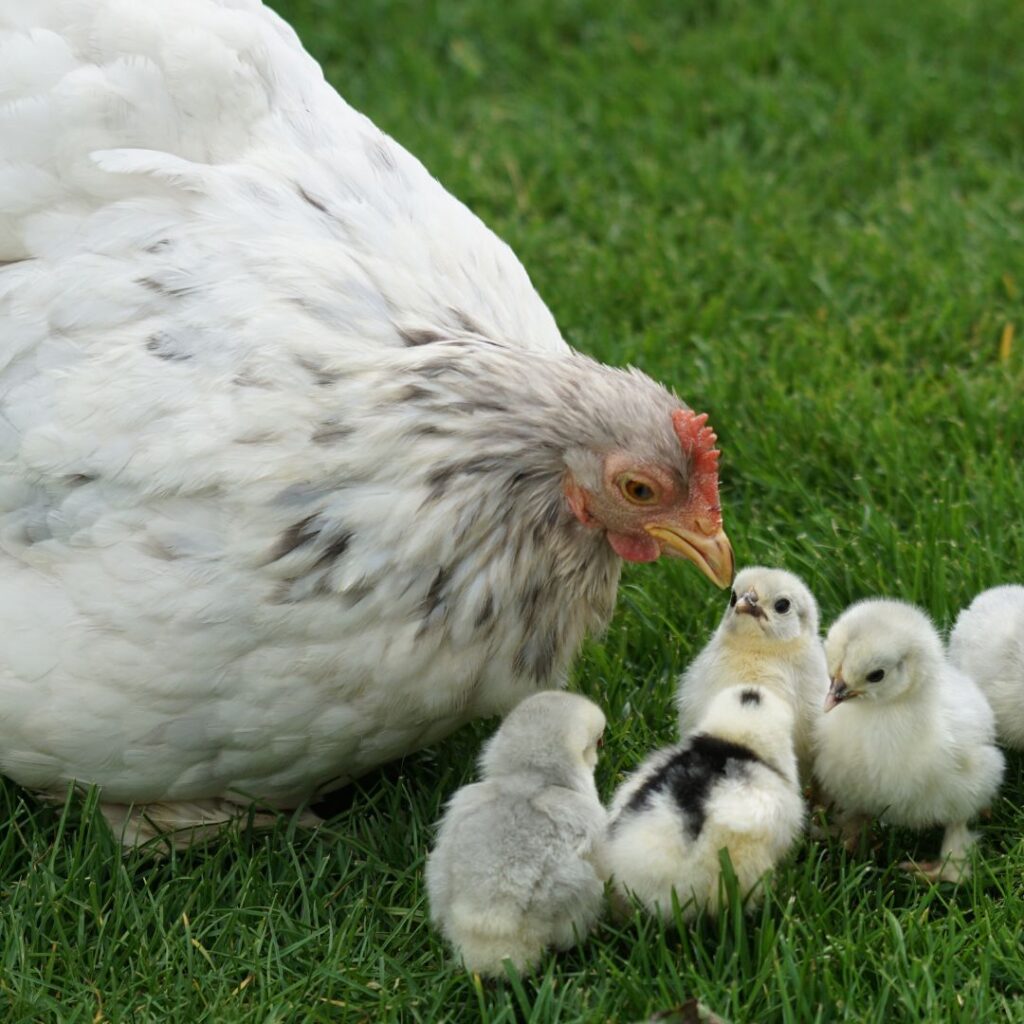
Cochins are known in the chicken world as gentle giants. These chickens are a docile, calm, and friendly breed.
- Recognized by APA: Yes, 1874
- (TLC) Status: Recovering
- Cold Hardy: Yes
- Heat Tolerant: No
- Dual purpose breed: O.K. Great as a meat bird with egg production on the lower side.
- Eggs: Medium, Brown, 120-160 per year
- Age til Mature: 20 weeks
- Size: Hens – 8 1/2 lbs, Roosters – 11 lbs
Cornish
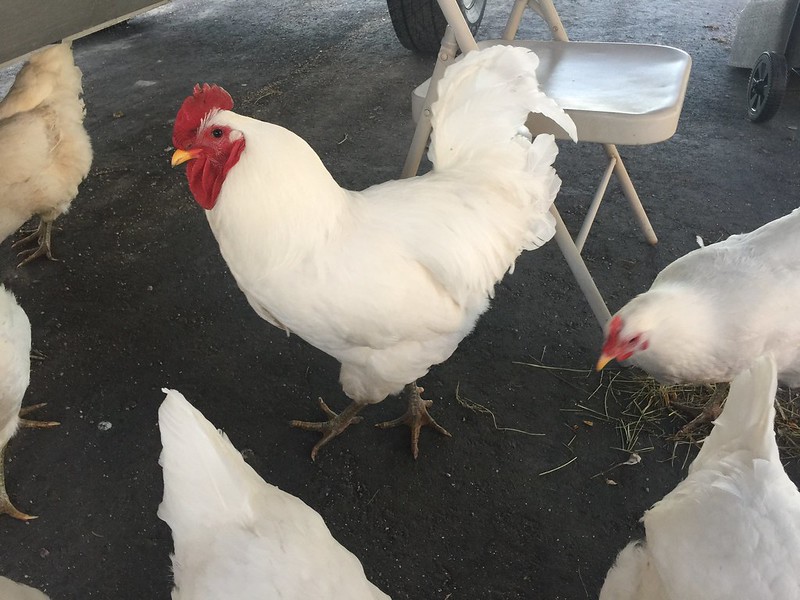
Cornish can tend to get overweight. They are so laid back and content, just hanging out without a strong desire to free range. They’re precious birds with docile and quiet personalities. You need to be sure not to overfeed this one.
- Recognized by APA: Yes, 1893
- (TLC) Status: Threatened (this does not include the cornish cross breed)
- Cold Hardy: Yes
- Heat Tolerant: No
- Dual-purpose breed: Yes, a superior dual-purpose bird, known for being a great meat bird
- Eggs: Large, brown, approx 150 per year
- Age til Mature: 22 weeks
- Size: Hens – 7 – 8 lbs, Roosters – 10 -12 lbs
Delaware

Delawares are chatty birds that can get loud but oh so friendly! They’re confident and independent, making them great for free-ranging hobby farms.
- Recognized by APA – Yes – 1952
- (TLC) Status: Watch
- Cold Hardy: Excellent, mostly because of their body size
- Heat Tolerant: Do well with proper shade and coop/yard preparation.
- Dual Purpose Breed: Yes, a great choice for an egg and meat chicken.
- Eggs: Extra Large, Brown, 175-250 per year
- Age til Mature: 20-22 weeks
- Size: Hen – 6 1/2 lbs, Rooster – 8 1/2 lbs
Dominique

The Dominique chicken is a great beginner chicken breed; they are friendly, docile, and easy to care for.
- Recognized by APA: Yes, 1873
- (TLC) Status: Watch
- Cold Hardy: Yes
- Heat Tolerant: O.K.
- Meat: Yes
- Eggs: Large brown eggs, 175 – 250 per year
- Age til Mature: 20 weeks
- Size: Hen 5 lbs, Rooster 7 lbs
Jersey Giant
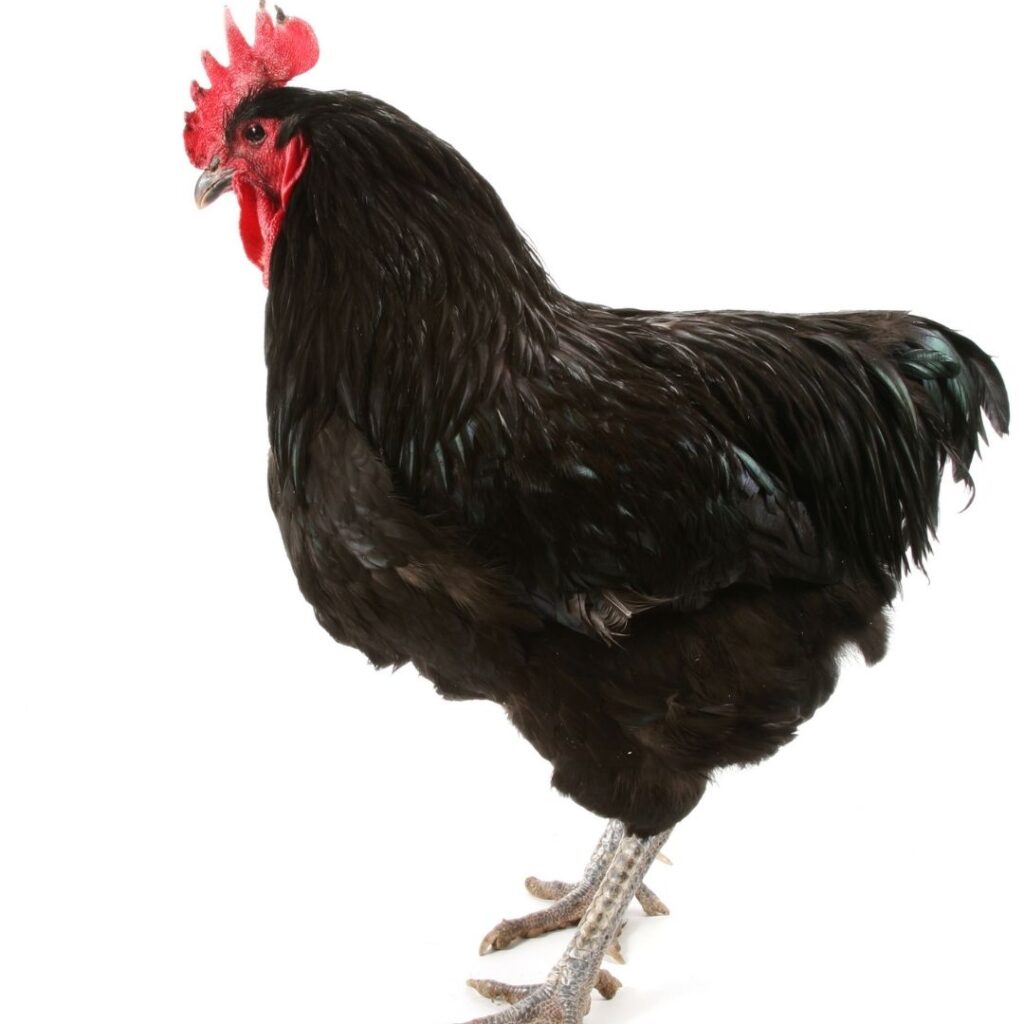
Jersey Giant chickens are the world’s largest chicken breed. Their size is matched only by their personality. Known to be friendly and great as pets, this bird is an excellent choice for free-ranging flocks.
- Recognized by APA: Yes, 1922
- (TLC) Status: Watch
- Cold Hardy: Yes
- Heat Tolerant: O.K. with proper shade and water
- Meat: Yes
- Size: Hens – 11 lbs, Roosters – 13 lbs (occasionally 15lbs!) 22-26 inches tall
- Egg Production: Medium-Large, 175-250 brown eggs per year.
- Age til Mature: 20 weeks
Orpington
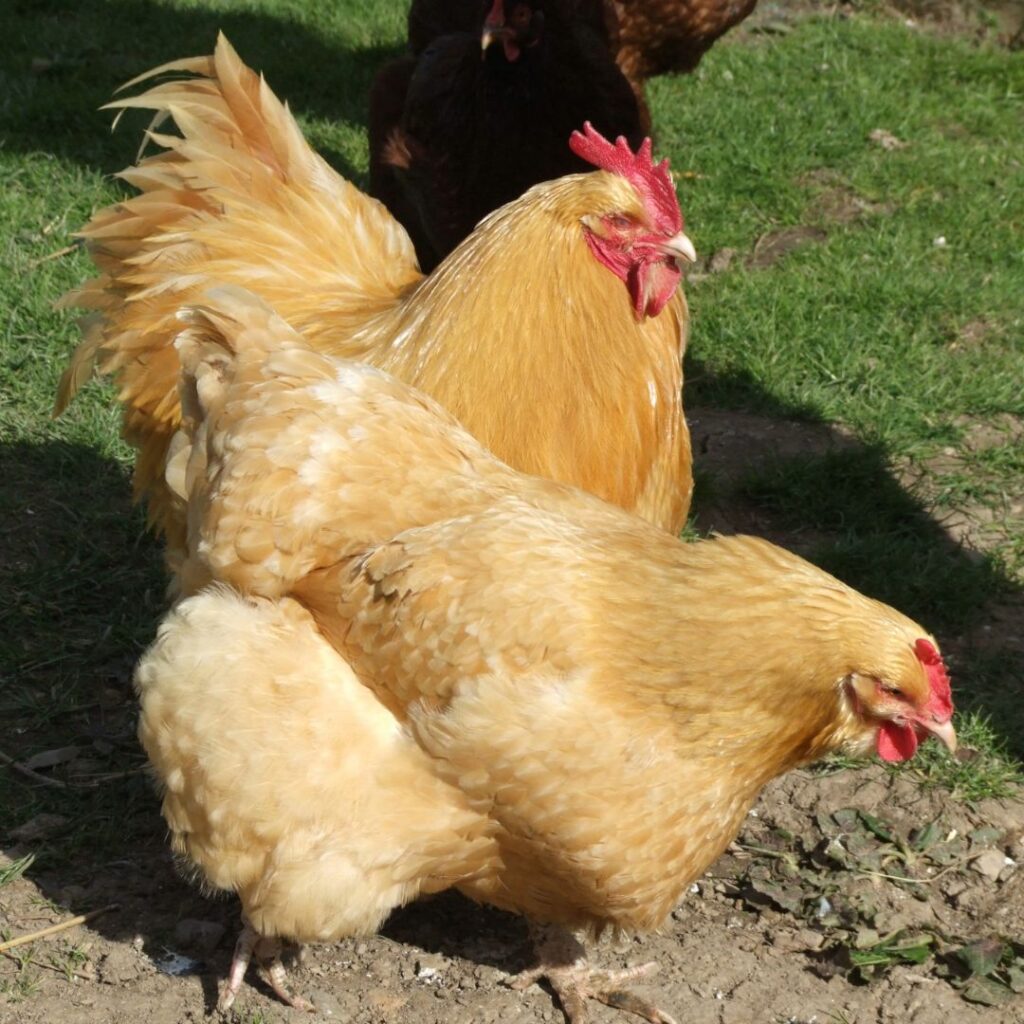
Orpington chickens are a great all-around pet and dual-purpose breed. This chicken is friendly, calm, and relatively peaceful. To top it off, they are also excellent layers.
- Recognized by APA: Yes, Buff Orpington – 1902, Black, White – 1905, Blue – 1923
- (TLC) Status: Graduated!
- Cold Hardy: Yes
- Heat Tolerant: No
- Meat: Yes
- Size: Hens 8 lbs, Roosters 10 lbs
- Eggs: Medium – Large, brown, 200-280 per year
- Age til Mature: 20 weeks
Rhode Island Reds
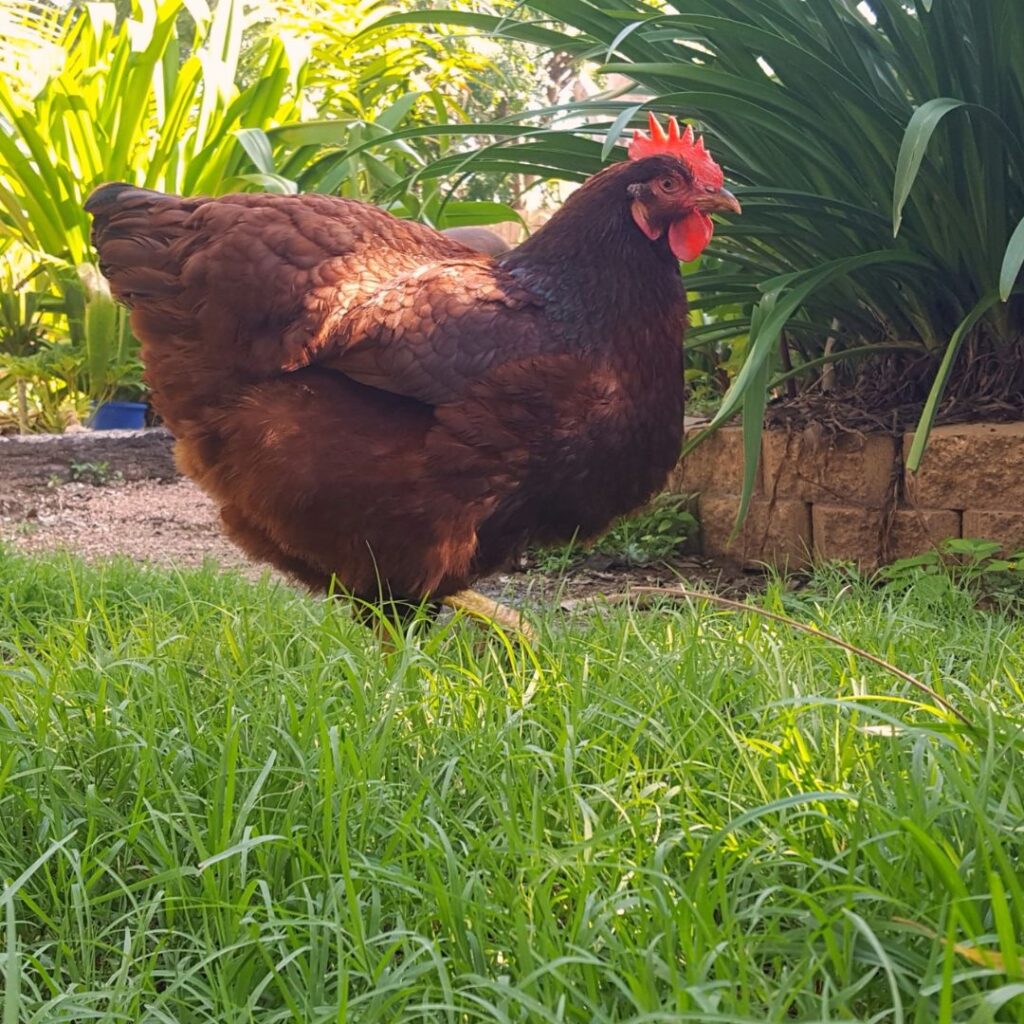
These birds have a reputation as prolific layers. However, the non-industrial Rhode Island Reds are on the watch list with The Livestock Conservancy. These chickens are known to be independent, extremely hardy, and an all-around great choice as a pet and beginner chicken owner pick.
- Recognized by APA: Yes – 1904
- (TLC) Status: Watch
- Cold Hardy: Excellent
- Heat Tolerant: Yes
- Meat: Yes
- Size: Hen – 6 1/2 lbs, Rooster – 8 1/2 lbs
- Egg production – Large, 200-280 brown eggs per year
- Age til Mature: 20 weeks
Speckled Sussex

Speckled Sussex chickens are super approachable. They’ll be the first to come running right up to greet you with their outgoing, friendly personality. They’re a high-energy free-ranging superstar.
- Recognized by APA: Yes, 1914
- (TLC) Status: Recovering
- Cold Hardy: Yes
- Heat Tolerant: Yes
- Meat: Yes
- Size: Hen – 7 lbs, Rooster 9 lbs
- Egg production: Large, light brown egg color, up to 240 per year
- Age til Mature: 20 weeks
Wyandotte
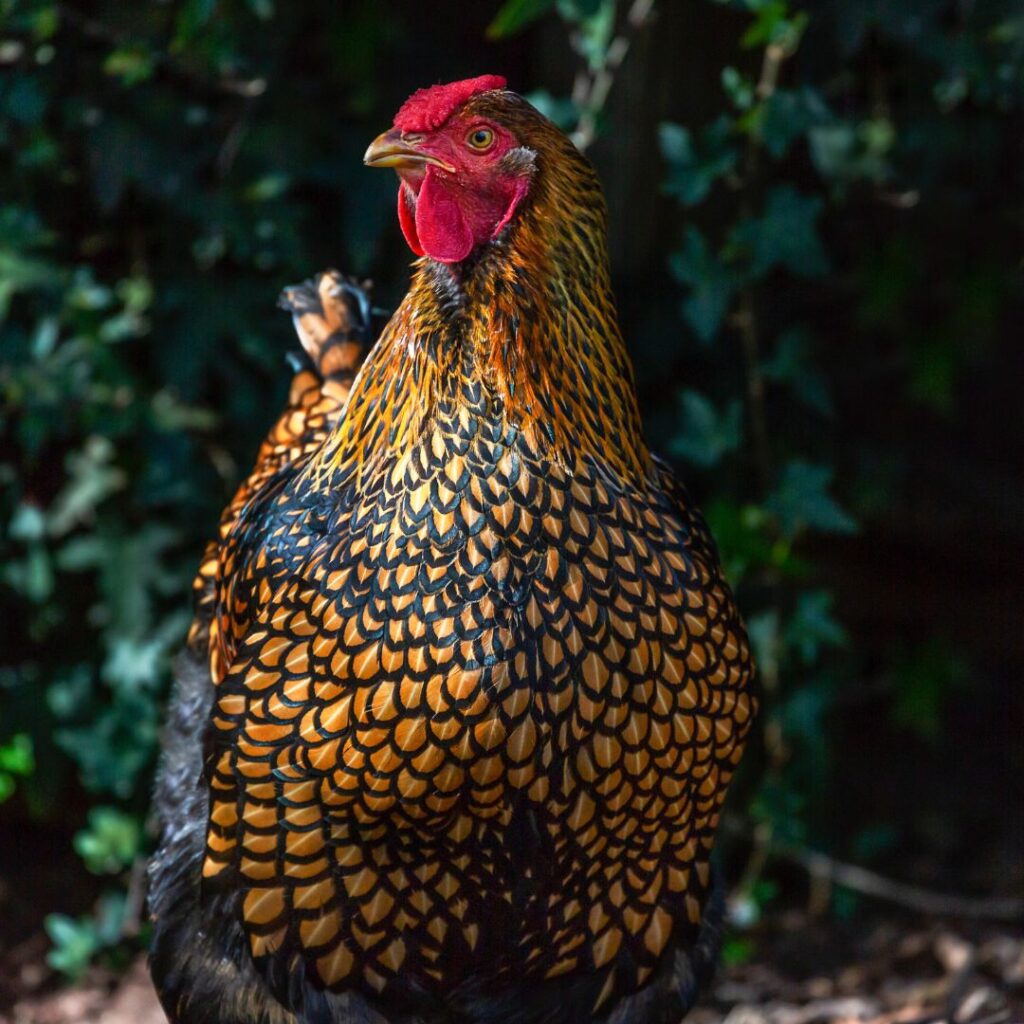
Wyandottes are gorgeous birds, known for being docile yet confident and quite independent. They can also have an assertive side – more of an adult chicken owner pet than small children.
- Recognized by APA: Yes, 1883
- (TLC) Status: Graduated
- Cold Hardy: O.K.
- Heat Tolerant: O.K.
- Meat: Yes
- Size: Hen 6-7 lbs, Rooster 8-9 lbs
- Eggs – Large, brown eggs.
- Age til Mature: 20 weeks
Read about 15+ Best Egg Laying Chickens here.
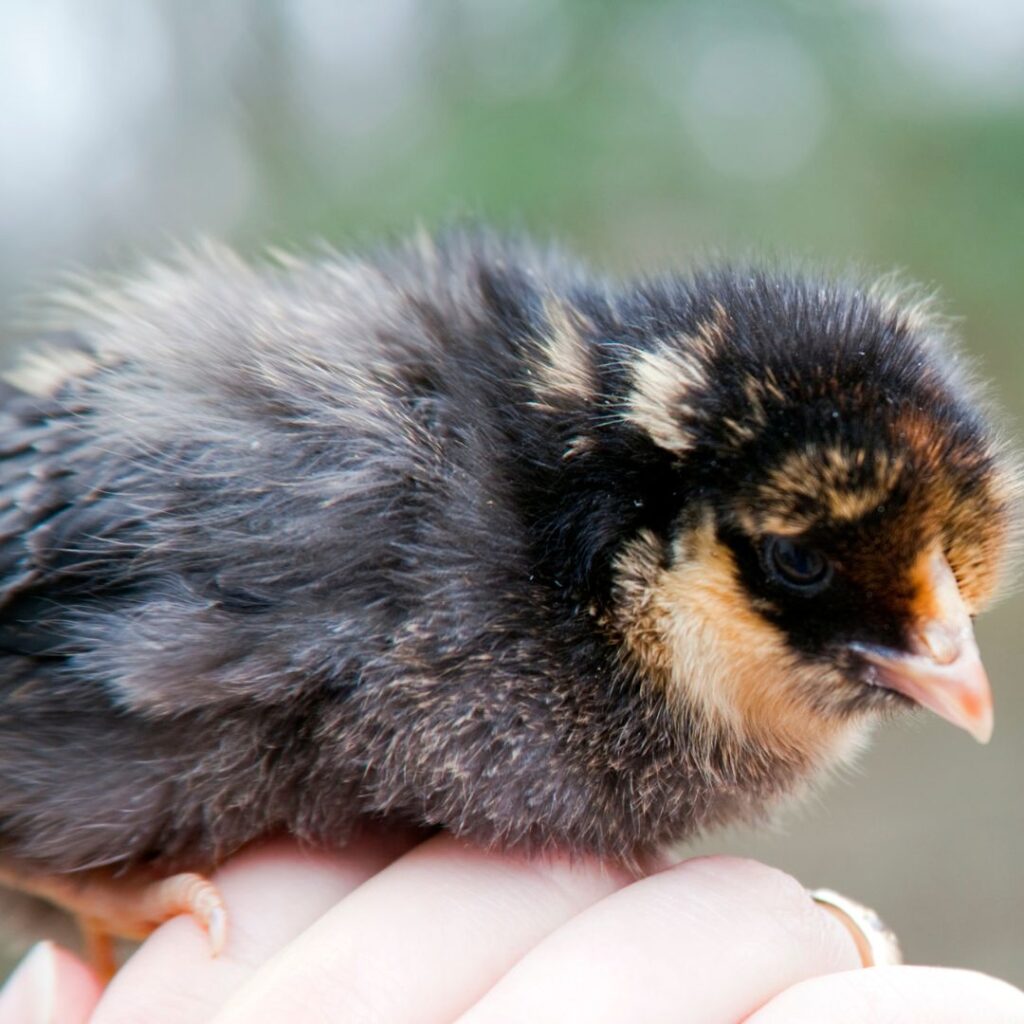
Other Poultry That Are On The Livestock Conservancy List
There are many other poultry breeds on the Conservancy’s list, along with livestock breeds. Other poultry types are Ducks, Geese, and Turkeys.
Conclusion
Heritage chicken breeds are an exciting and rewarding addition to any flock! These unique animals offer many benefits over commercial chickens, including improved disease resistance, longer lifespans, fun personalities, and the satisfaction of knowing you’re helping preserve these endangered animals. Research which breed(s) would fit your farm or backyard coop well.
Read more here if you’re looking for broody hens that will contribute to a sustainable flock.
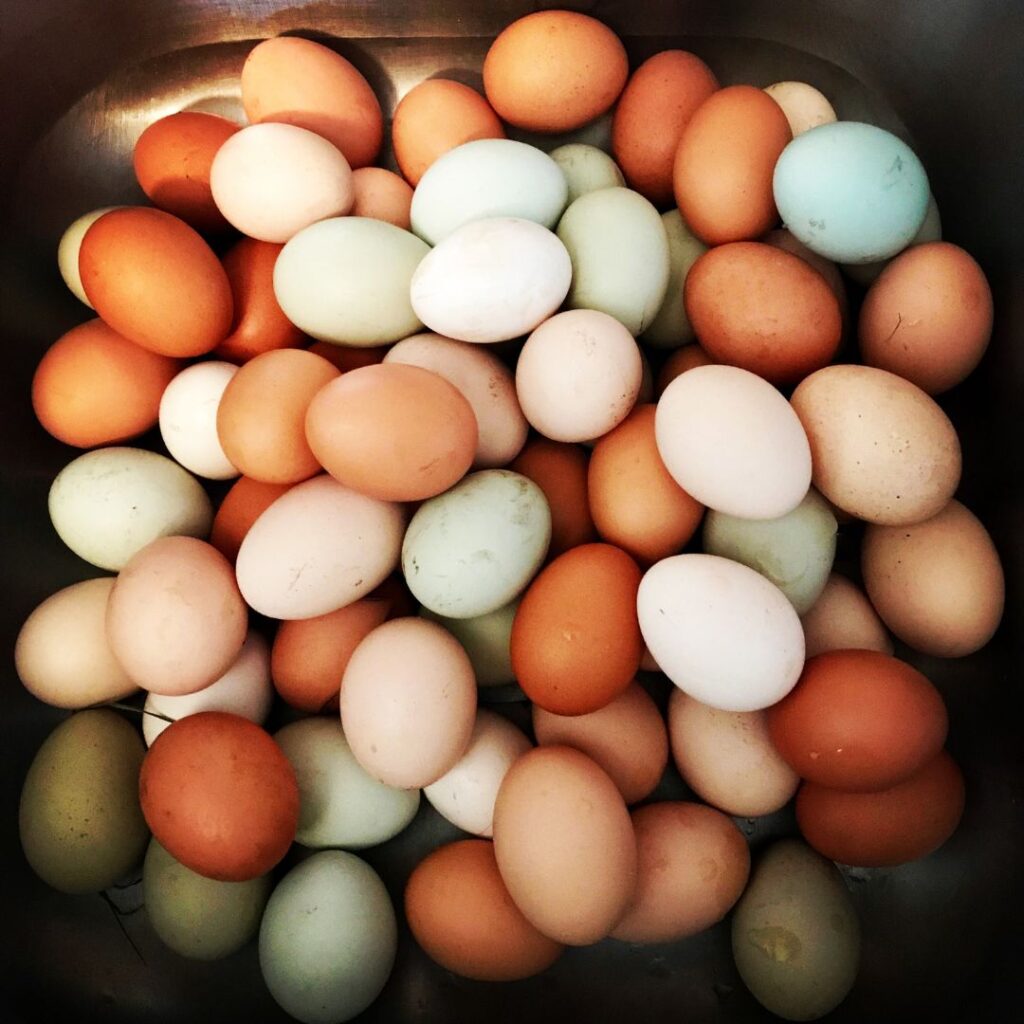
FAQ’s
Why Isn’t The Broad Breasted White Turkey On This List?
This turkey is not included on our heritage chicken list because it’s a turkey.

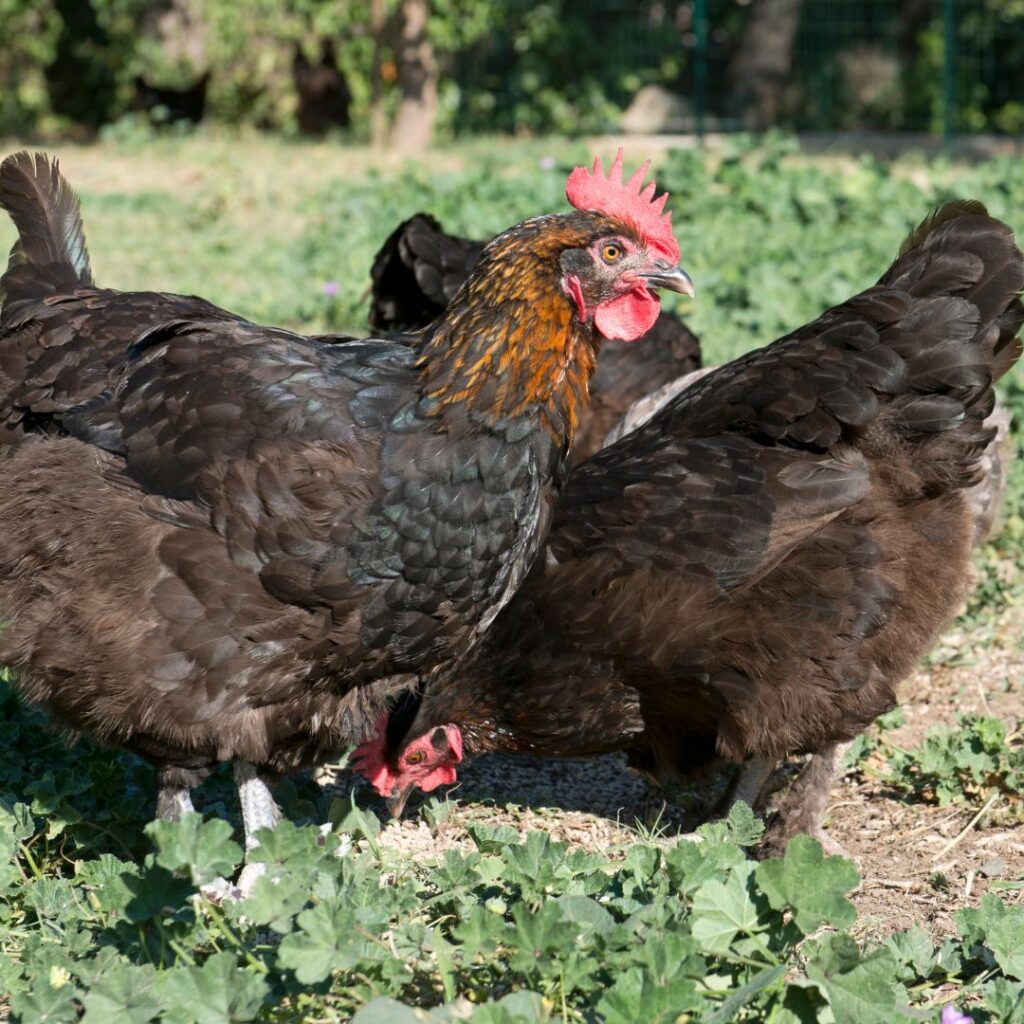
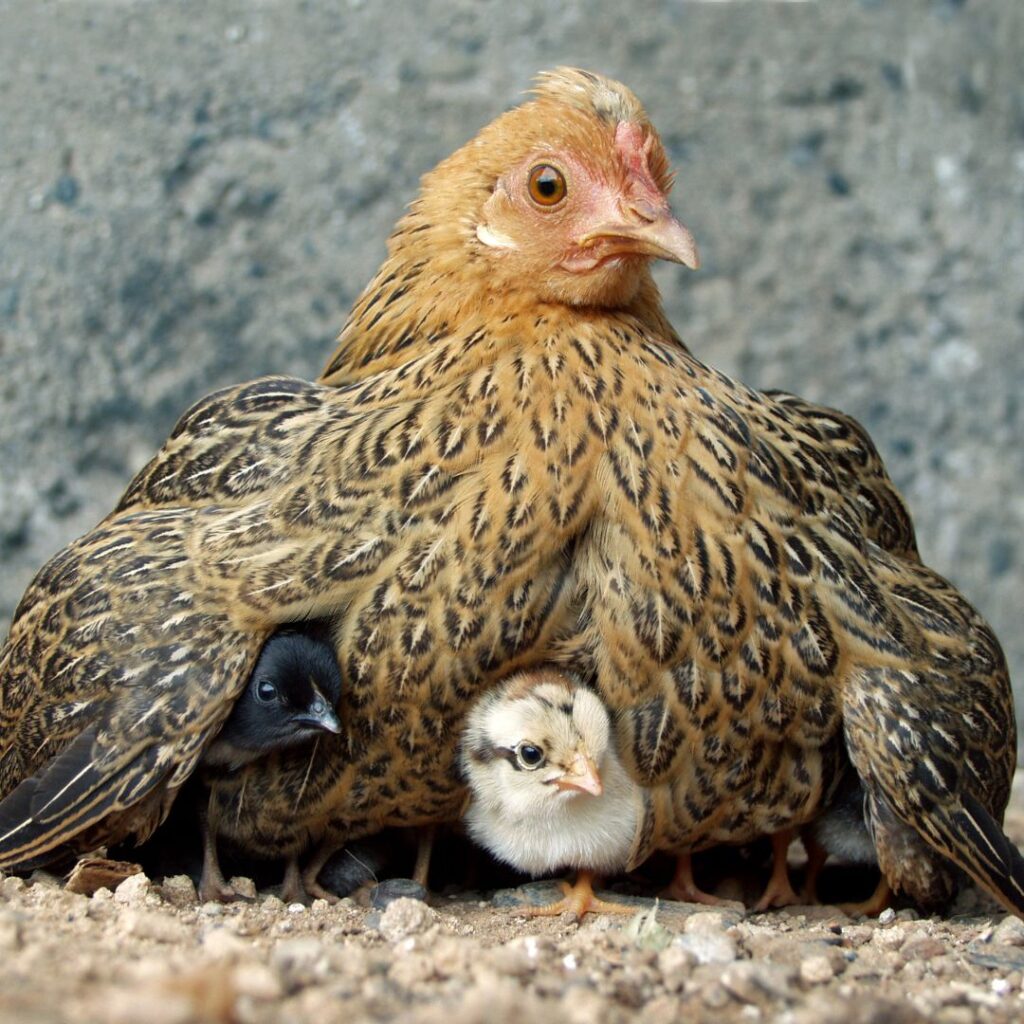
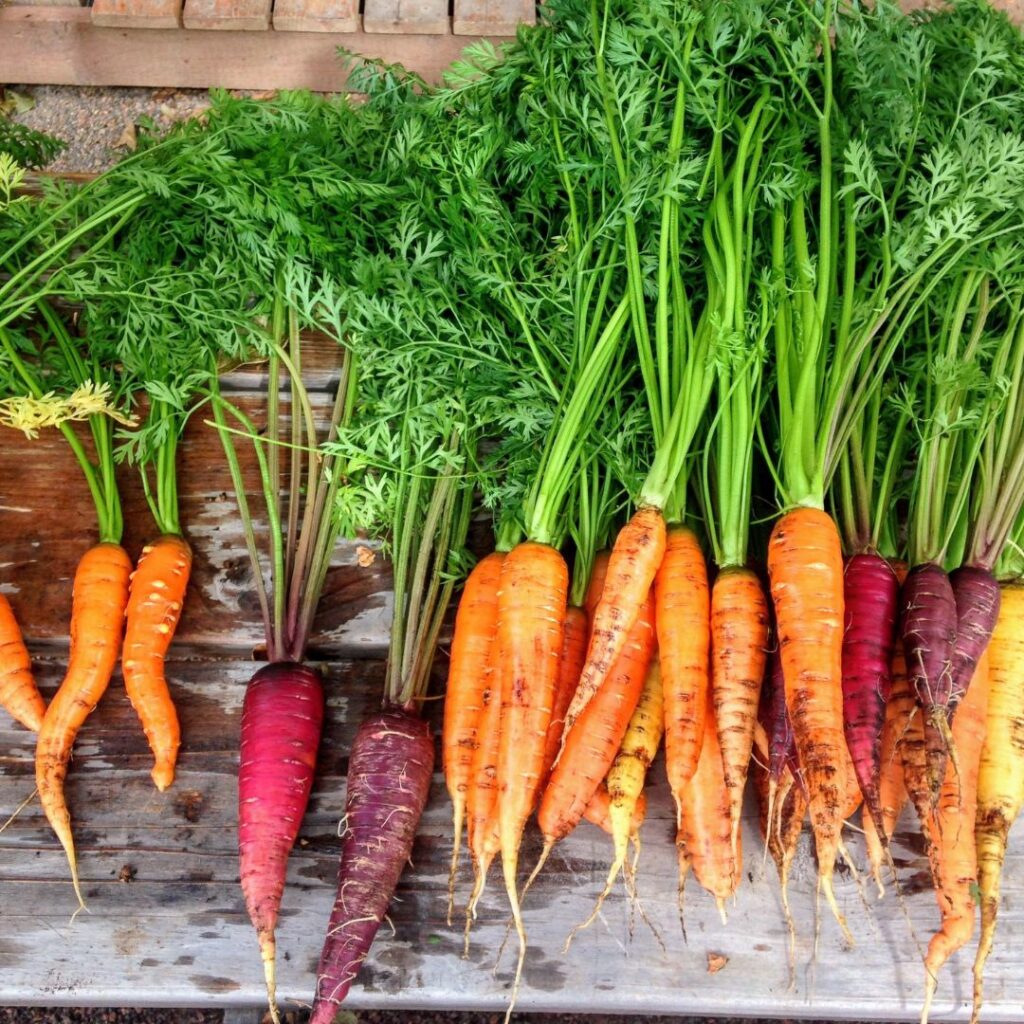
Pingback: 15 Best Rooster Types & 3 Bantam Roosters: Sustainable Flock
Pingback: Polish Chickens: Pom Pom, Top Hat Chickens; All About
Pingback: Charming Salmon Faverolles Chicken: About This Heritage Breed